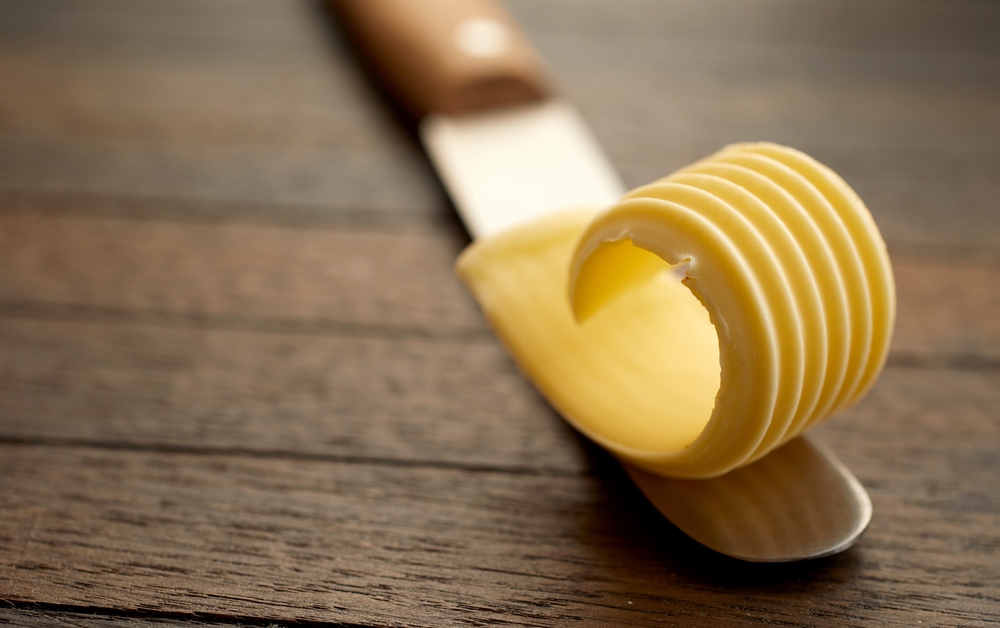
If you’ve felt a twinge of shock in the dairy aisle lately, you’re not alone. Butter prices have spiked again, surprising even the most seasoned grocery shoppers. The cost of a pound of butter now hovers near record highs in many parts of the country, with some brands exceeding $7 per pound. This latest increase is part of a recurring trend tied to global dairy supply shortages, high feed costs, and consumer demand. But don’t panic! Understanding what’s behind these price swings can help you plan and save smarter.
The Real Reason Butter Prices Won’t Settle
The rollercoaster of butter prices starts at the farm level. Cows produce less milk in extreme heat or drought, both of which have hit major dairy regions hard in recent years. Add to that the rising cost of animal feed, transportation, and packaging materials, and you’ve got the perfect storm for expensive dairy. Butter, being one of the most resource-intensive dairy products to produce, gets hit hardest when supply chains tighten. Even after inflation cools in other areas, butter prices tend to lag behind, staying high long after production costs drop.
The Holiday Effect: Why Butter Prices Spike Every Fall
Every fall, butter prices jump again as the holiday baking season kicks in. Retailers know demand for butter skyrockets from October through December as families prepare cookies, casseroles, and pies. Producers often scale back earlier in the year to avoid surpluses, so when seasonal demand surges, there’s less stock to go around. The result is a predictable, annual price surge that still manages to shock consumers. If you bake frequently, buying butter off-season and freezing it can save serious money.
The Brand Premium You’re Paying Without Realizing It
Part of what drives up butter prices is branding. Premium labels often charge extra for packaging and marketing rather than actual quality differences. Blind taste tests have shown that many store-brand butters perform just as well as name brands in baking and cooking. Choosing generic options can easily knock $1–$2 per pound off your total. When it comes to butter, the biggest difference is usually the label, not the flavor.
5 Smart Ways to Pay Less Than $5 a Pound
Even with inflation, there are still practical strategies to find butter for under $5 a pound:
- Shop Warehouse Clubs: Bulk stores like Costco or Sam’s Club often offer multi-pound packs that bring per-pound costs down significantly.
- Use Grocery Apps: Apps like Ibotta or Fetch frequently feature rebates on butter and dairy products.
- Buy in Bulk During Sales: Stock up when prices dip, especially after major holidays when stores clear out surplus inventory.
- Freeze It: Butter freezes exceptionally well for up to a year, maintaining both texture and flavor.
- Check Local Dairies: Smaller producers and farmers’ markets sometimes undercut national chains and offer fresher, richer butter in the process.
These small steps can help you sidestep the worst of the butter price surge without cutting back on quality.
Alternatives That Still Taste Like the Real Thing
If you’re flexible, there are excellent substitutes for high butter prices. Margarine has made a comeback, with newer blends offering better taste and healthier fats. Many bakers also swear by oil-butter hybrids or plant-based spreads that mimic traditional butter in texture and flavor. European-style butter, while pricier per pound, is richer in fat content, so you can use less of it per recipe. Experimenting with these options can keep costs low while preserving that creamy, familiar taste.
How Retailers Use Psychology to Keep Prices High
Ever notice how butter prices are often tucked between higher-end specialty products like cheeses or imported dairy? That’s no accident. Grocery stores use product placement and “anchoring,” placing expensive items nearby, to make regular butter seem like a better deal. They also reduce package sizes subtly while keeping shelf prices the same, a classic case of shrinkflation. Always check the price per ounce or pound before assuming you’ve scored a bargain. Awareness is the best defense against retail trickery.
When to Expect Butter Prices to Finally Cool
Economists predict butter prices may stabilize later in 2025, depending on weather conditions and dairy feed costs. If milk production rebounds and transportation bottlenecks ease, prices could fall slightly by next spring. However, energy and packaging costs remain unpredictable, meaning butter will likely stay higher than pre-pandemic levels. Savvy shoppers should treat these spikes as the new normal and plan around them rather than waiting for a dramatic drop. With the right timing and storage, you can still beat the system.
A Smarter Way to Butter Your Budget
Butter is a kitchen staple, but it doesn’t have to drain your grocery budget. Understanding how butter prices work and knowing when and where to buy can save you real money over time. Keep an eye out for sales cycles, store brand comparisons, and local dairy options. With a little strategy, you can enjoy the richness of real butter without paying inflated prices. After all, saving money is just as satisfying as spreading it on warm toast.
Have you noticed butter prices rising again in your local stores? What’s your favorite trick for finding the best deals? Share your tips in the comments below!
What to Read Next
- 7 Times Buying Butter in Bulk Will Ruin Your Recipes
- 5 Reasons Grass-Fed Butter Is Actually Worth the Extra Cost
- What Explains the Price Difference in Butter Between Iowa and Illinois?
- How AI Is Secretly Setting the Prices You See on Grocery Shelves
- 12 Items Shoppers Always Forget Until Prices Jump
The post Butter Prices Surprise Everyone Again — How to Still Get It for Less Than $5 a Pound appeared first on Grocery Coupon Guide.







